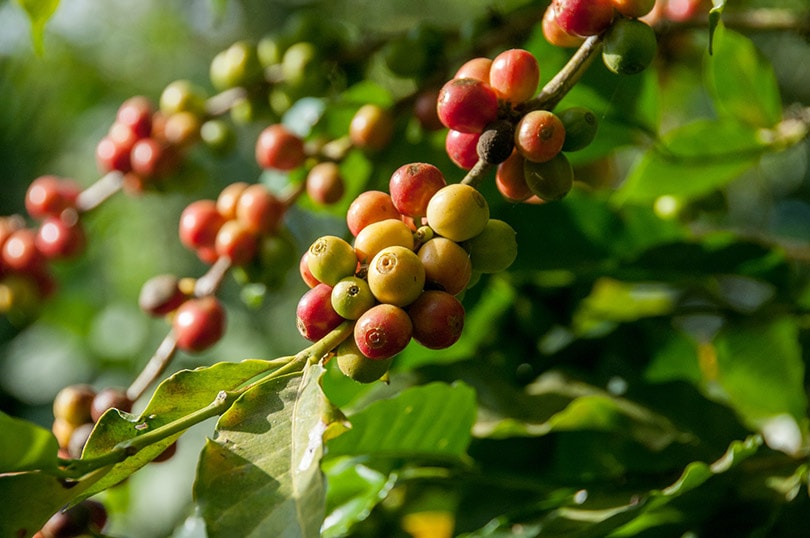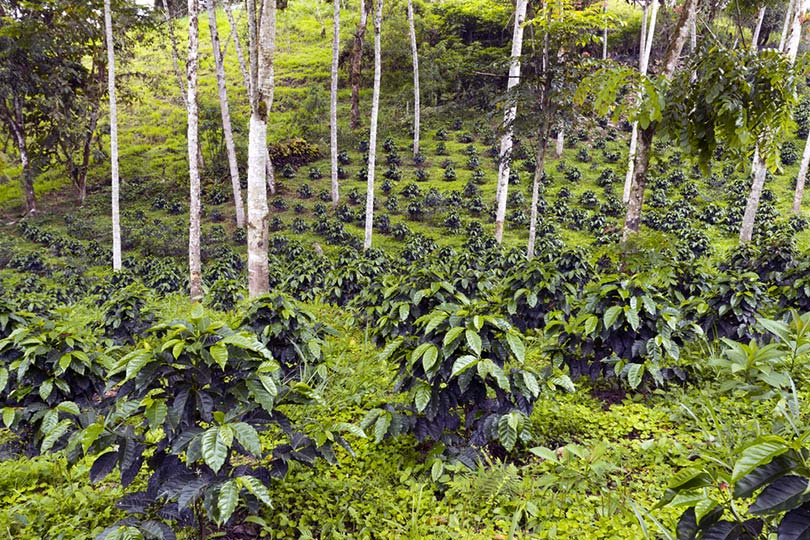
Sitting back to enjoy a cup of coffee when you need to wake up, refresh, or unwind is something many people around the world enjoy. Coffee is the second most popular drink in the world and is always there when you need a hot, or cold cup. But have you ever thought about the impact the demand for coffee has made on the rainforests where the beans are grown in abundance? If you’re like most people, you haven’t.
While it’s common to enjoy the smooth taste of a cup of joe, thinking beyond the yumminess in our cups isn’t as widespread as the love of coffee. Let’s take a look at the effects coffee is having on the environment and what we can do to help promote a better ecosystem for the plants we depend on for our daily energy.

Naturally Grown Coffee
Wild-growing coffee thrives in shaded environments with little to no sunlight. In the beginning, before the coffee industry became the giant that it is now, most coffee plants were grown mixed in with other plants to promote proper growth in their natural environment. This produced quality crops and put excellent flavor in the cups of coffee lovers around the world. Unfortunately, naturally grown, or shade-grown coffees couldn’t sustain the demands thrust upon them by the coffee industry. This is when sun-grown coffee came into play.

Sun-Grown Coffee Erupts
Sun-grown coffee is not farmed in the traditional way coffee plants of old were. These plants were engineered to produce nearly three times the amount of coffee shade growing plants do. Unfortunately, the production of this coffee is also harsh on the environment and one of the main reasons the rainforests are suffering from deforestation. To grow these plants, farmers must clear land in tropical climates for mass production. Much of this land is the beloved land of the rainforest.
Sun-grown plants are also known for damaging the grounds they grow on. Due to the fact they aren’t growing how coffee plants naturally would, it’s common for pesticides and fertilizers to be utilized to sustain the crops. These harsh chemicals can destroy the lands and even produce runoffs that flow into the local water systems which are harmful to not only plant and animal life but the people as well.
The Damage to Rainforests
While all the damage to the rainforests can’t be blamed on coffee production, the industry has its fair share of culpability. At one time, the earth’s rainforests covered nearly 14.5 million square kilometers. Now, only 34% of rainforests are still intact, with much of them considered in a degraded state. Luckily, there are coffee producers who are stepping in to try and stop this deforestation while continuing to produce the beans we all love.

The Coffee Industry Steps Up
While the world is drinking millions of cups of coffee a day, some in the coffee industry are trying to put a stop to the damage they are doing. Many are reverting to growing shade-grown coffee the way it should be. This means they are growing plants mingled in with the local plant life instead of clearing out large areas to make their farms. The coffee produced when grown this way is often superior and better quality than beans grown in the blazing sun.
Many in the coffee industry are also trying to bring life back to the lands that are suffering. To do this, they are incorporating native trees and other plant species to provide proper homes for birds and animals in the regions. They are even foregoing harsh chemical pesticides and fertilizers for those that are more natural and safer for the environment.
How Can You Help?
While you may feel there isn’t much you can do to fight against the deforestation caused by the growth of coffee, there actually is. By choosing shade-grown coffees or brands that promote the protection of the environment you’re helping out. Yes, this may end up costing you a bit more when it comes time to buy your favorite coffee but look at what it can do for the earth and environment.

In Conclusion
We all know deforestation takes place all around us. Unfortunately, the rainforests aren’t the only areas hit. When it comes to the coffee industry’s impact, however, it seems the rainforest is the hardest hit. The next cup of coffee you drink, consider how the beans were grown and whether the farmers and lands are being taken care of. If not, perhaps that brand isn’t the coffee you should have in your cup.
Featured Image Credit: Rodrigo Flores, Unsplash















